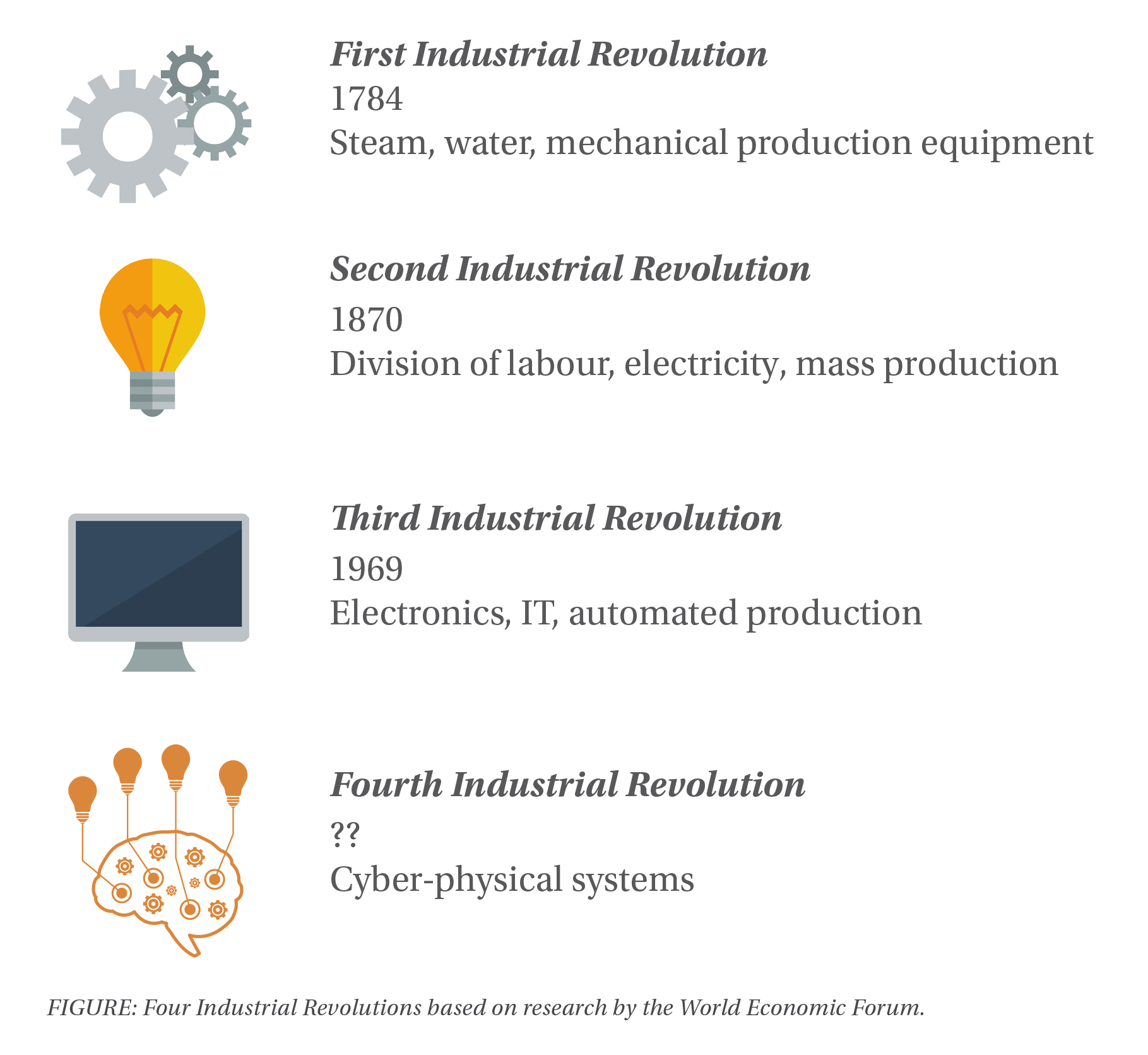Growth in modern times
The modern economic era has changed our definition and expectations of business growth. In this article, we discuss why family companies are uniquely equipped to tackle the new challenges.
In other words, the blurring of the lines between the real world and the digital world is progressing rapidly, and the landscape of growth opportunities is changing accordingly.
Has the narrative around business growth changed? Many argue that it is the dawn of the Fourth Industrial Revolution that has allowed new models for scaling and expansion to emerge (See Figure). Historically, this is not unusual as each industrial revolution has undoubtedly brought with it the possibilities of accelerated growth for companies in various industries. In the Figure below the World Economic Forum highlights each revolution till date and what the trigger to their transformative nature have been. In discussing the fourth such paradigm shift, they refer to the time of cyber-physical systems. In other words, the blurring of the lines between the real world and the digital world is progressing rapidly, and the landscape of growth opportunities is changing accordingly.
Rapid-growth companies like founder-led IKEA and Virgin are also frequently drawn upon when referring to best-practice for expansion and scale.
But what does this shift in growth opportunities mean to the multigenerational enterprise; the family business? Do family businesses have what it takes to participate in this paradigm shift?
There is no question that family businesses can experience hyper- or rapid-growth, and many have done so not only during the lifetime of the founder but also under the management of later generations.
There is no question that family businesses can experience hyper- or rapid-growth, and many have done so not only during the lifetime of the founder but also under the management of later generations. Taking a closer look at the complex system of the family-owned company we can identify three dimensions in which growth should be cultivated simultaneously: family, owners, and management.
Family Dimension
Aside from members who are actively contributing to the day-to-day of the business or sit on the board, the family remains one of the greatest assets for growth: it represents a strong tool to build communities and organic networks around the business. The loyalty and dedication to the continuity of the company is one of the strongest drivers for growth imaginable.
To stimulate accelerated growth in modern times, the family needs to cultivate the right mind-set. This can be achieved through great emphasis on education and talent building, as well as new formats of interaction and involvement of the next generation. Paramount to remain competitive in a global marketplace is also to encourage cultural and geographical awareness in the family.
[ms-protect-content id=”4069, 4129″]
Owners Dimension
The role of the owner or shareholder, when not in a management role, is one that is often perceived as a passive and receptive one. The classical approach to thinking about growth is that the business expansion will benefit the owners by increasing their wealth. That, in fact, the owner can play a crucial role in bringing about accelerated growth is not often discussed. For instance, owners play a material role in maintaining a strategic overview of the company’s development, and in understanding new industries. Their long-term, macro view can ideally complement the management’s day-to-day tasks. The fact that family ownership is a long-term ownership is a great advantage and should be strategically used in discovering new opportunities.
Management Dimension
The management in the family business is at an advantage if they can draw on the support of owning and non-owning family members and by consciously instilling entrepreneurial culture and thinking throughout the organisation.
Management and leadership have arguably felt the greatest impact of the economy of the 21st century. Business leaders have to strike a balance between many moving parts and the heightened expectations of growth. The management in the family business is at an advantage if they can draw on the support of owning and non-owning family members and by consciously instilling entrepreneurial culture and thinking throughout the organisation.
Growth is a complex topic. However, there is no reason to doubt that family-owned companies have all the necessary characteristics to take full advantage of the new economic age. A family business that takes advantage of all three dimensions to propel growth is undoubtedly set up for success until the next paradigm shift.
Tharawat Magazine, Issue 31, 2016
[/ms-protect-content]














